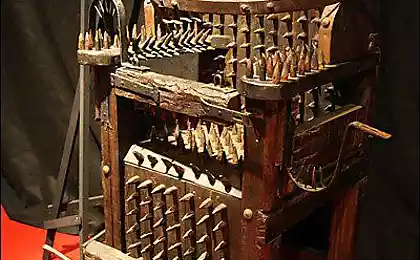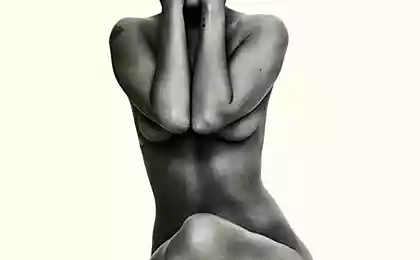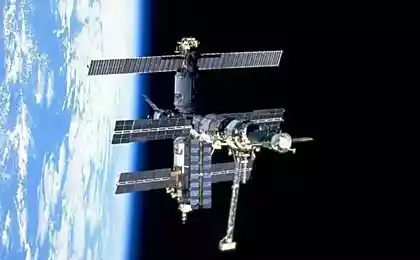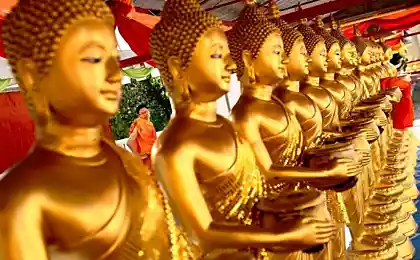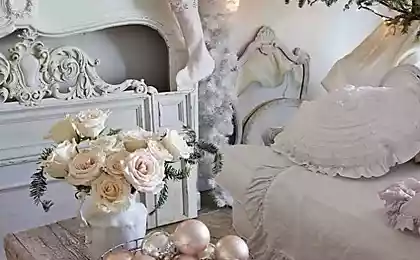735
10 common and perfectly misconceptions about the Inquisition
Difficult period istoriiEto one of the darkest periods in the history of Christianity. When people point to the dark side of the Catholic Church, the Inquisition - the first thing that comes to mind. This is a difficult period of history, and it is no wonder that it has grown a lot around the myths and misconceptions.
1. The Inquisition was a single sobytiemKogda we talk about the Inquisition, in no small part thanks to Monty Python and Mel Brooks usually have in mind the Spanish Inquisition. But she was not the only one, albeit the best known.
The idea of the Inquisition originated much earlier. Already in the first century Roman law makes allowances for what is called "inquisitorial procedure". There were other methods, such as the right to the consequences of torture under interrogation.
When, in the 4th century, Christianity began to spread in Europe, the laws regulate the issues as religious and secular. From the very beginning of Christian history, the bishops rather actively participated in the work of the Inquisition.
In 1184 the rules were changed the work of the Inquisition by Pope Lucius III century. towards a more aggressive search tools and extermination of heresy. In the Middle Ages the religious orders formed a group of people who were supposed to act as inquisitors. Their goal was to change behavior rather than punish them for it. However, things have changed a few hundred years later, with the emergence of the Spanish Inquisition.
2. Pagans and evreiObychno, wondering about the purpose of the Inquisition, we think of those people, who worshiped pagan gods, and the Jews. Although they were of course the main purpose of the Inquisition, the first targets were not they.
One of the first group of people who engaged in targeted Inquisition, was a group of Christians-the Cathars. The Cathars were opposed to the Roman Catholic Church, especially against its wealth and power. Severe persecution of the Cathars began under Pope Innocent III in. Toulouse. The soldiers were ordered to kill the Cathars, but they were not able to distinguish them from other Christians. Then the legate of Pope told them: "Kill them all in a row, then God will choose his!».
Around the same time, the Pope also announced its condemnation of another Christian group, the Waldenses. This group of Roman Catholic Church recognized heretical, including lack of belief in the existence of Purgatory, and the idea that someone can consecrate bread and wine. The Waldensians fought its activities for several hundred years, but eventually became the victims of witchcraft accusations.
3. It was longer than you dumaliPo essence, the goal of the Inquisition - not torture and death; she was going to eradicate heretical thoughts and actions. And the inquisitors should not only for the fact that people are doing, but also what they are reading. The result was the Index of Forbidden Books. The first official version of the list was published in 1559 by Pope Paul IV and caused a lot of controversy. The idea of the list came a few decades before, and for the next four centuries Index is constantly updated and refined.
With the spread of the plurality of unauthorized religious texts in the index makes a huge number of bizarre records. Among them - the works of Alexandre Dumas, Victor Hugo, Daniel Defoe and Jonathan Swift. Most philosophers: Descartes, Mill, Kant, Sartre and others - have also been included in this list. And only in 1966 the Sacred Congregation for the Doctrine of the Faith has ceased to publish and update the index of forbidden books, but still claims that high moral believers must continue to use the list as a guide, what books to read.
In our time, as the Holy Inquisition acts Congregation for the Doctrine of the Faith. This is her present name. The purpose of the Congregation, ancestor of which was established in 1542 by the Sacred Congregation of the Universal Inquisition, is to protect the church from heresy, according to the Vatican.
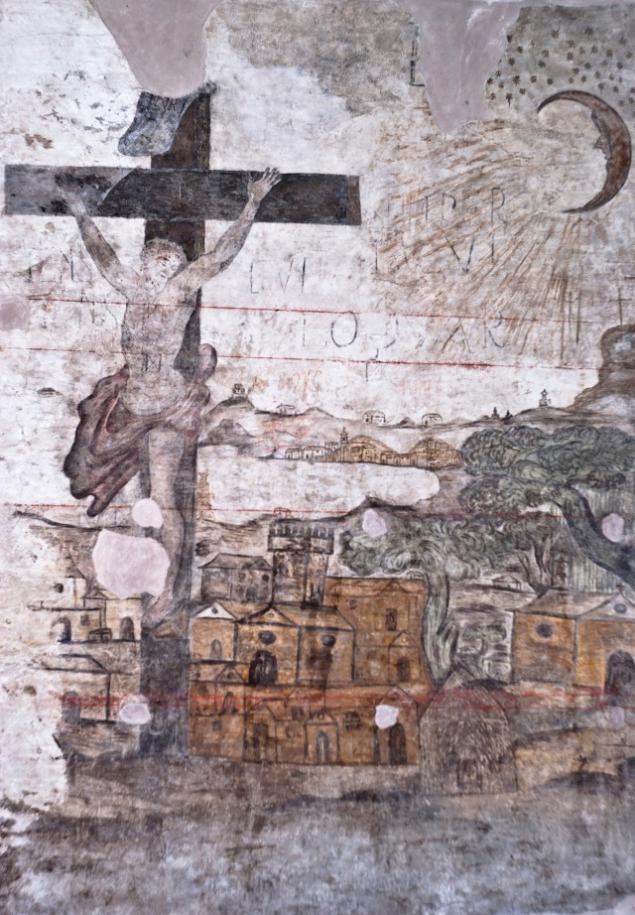
4. Prohibition pytokEto probably Basically, the famous Inquisition. But torture is not always been the most common method in the arsenal of the church. Some of the earliest works on freedom of religion, such as the works of Lactantius, 4th century, say that the one who will defend their religion by torture will not get into the kingdom of heaven. In its early years the Inquisition did not use torture and punishment.
In the 13th century inquisitors torture banned. But they could be present at the torture, who conducted the secular executioners. Torture used to extract confessions, but the upper classes were exempt from them. It was not until 1252, when Pope Innocent IV gave the right to the members of the Inquisition to use torture as a way of achieving truth.
Later torture was used under the condition that the blood be not shed and interrogated there was no incurable damage to the extremities, also encouraged the death of the tortured. This, of course, required the presence of secular tortures executioners - specialists in such methods of interrogation.
5. Number of kaznennyhSkolko people died during the action of the Inquisition - no one knows. Some historians argue that the millions were killed, while the others are talking about tens of thousands. According to an official statement released by the Vatican in 2004, the victims were much smaller.
According to the documents prepared by the Vatican, the court of the Spanish Inquisition were put 125 thousand people, and only about one percent of them were executed. The results were published at the end of a process that began in 1998. The same study showed that about 25 000 people were executed for witchcraft in Germany, but most of them - not the hands of the Inquisition. A small country of Liechtenstein presented its sad statistics: the Inquisition were executed by only 300 people, but at the time it was about 10 per cent of the total population.
Even the Vatican has issued a statement in which Pope John Paul II apologized for the actions of the Church in the past.
6. SveteIspanskaya Inquisition in the New Inquisition was very far away. However, the Inquisition existed not only in Europe - all the Spanish colonies in the New World to feel the heavy hand of her. While the monarchs of Europe were fighting for their share in the New World, Ferdinand and Isabella Spanish were among the strongest supporters of a unified nation under the shadow of the Catholic Church. It was during their reign of the Spanish Inquisition gained power. And the Grand Inquisitor Torquemada, with its sinister reputation was the personal confessor to the queen.
When Spain and Portugal were engaged in the colonization of the new continent, the people to be persecuted by the Inquisition, found many ways to take refuge in the New World; Many persecuted by the Inquisition settled in Lima. By 1520 missionaries and monasteries were allowed to perform all the duties that are considered necessary Inquisition.
One of the largest museums in Peru - Museum of Congress and the Inquisition. It was opened in 1968 and is still in the building, which once housed the Spanish Inquisition. The premises where torture extorted testimony, and the cells in which people were serving their sentences, still serve as a terrible reminder of the Spanish heritage of Lima.
7. Each inkvizitorovMysl waiting for the appearance of unannounced on the doorstep of the Spanish Inquisition and the administration of ordinary people in the chamber for questioning still inspires horror.
When the inquisitors opened its representative office in the region, the first thing they announced about what are going to do. Until 1500, they read out a decree of grace, and after 1500 it was the decree of faith. The meaning of the decree was about the same, but they clearly stated the purpose of their activity.
The decrees gave community members from two weeks to several months before the Inquisition set to work. Any heretic offered to appear in court and plead guilty. When the time comes, they started to ask questions, and people testify against each other. In order to have begun a serious problem, it is sufficient if someone testified against you in confession.
It is believed that a large number of charges was the result of libel neighbors or denunciations of the people, who thus sought to get rid of competitors or to take possession of another's property. Denunciations were collected and evaluated, after which the Inquisition was knocking at the door. But it was never a surprise.
8. Conflict of "black legend" Get completely accurate information about what actually happened, not so easy. According to Spanish journalist Julian Huderias, much of what we know about the Spanish Inquisition (or think we know), is actually part of a massive smear campaign led by people who just do not like very much to Spain.
This is quite a new idea appeared in 1912. According Huderiasa, most of the criticisms and horror stories about the Spanish Inquisition came from the second half of the 16th century. The journalist believes that what we know about the Spanish Inquisition - only part of the truth, and that its history is written Protestant representatives of other countries in Europe, who would like to present the Spanish Catholics in a rather bad light.
Converts Catholic reformers, by and large, are not far removed from most of the Inquisition, and this fact is cited as support for the so-called "black legend". After the Protestant movement-oriented Catholic heretics, beginning to gain momentum, it's not only turned upside down, but also used for the perversion of the ideas of the Inquisition.
9. The willingness and unwillingness izmenitsyaEsli person considered a heretic, that did not mean that he is necessarily subjected to torture, or that he was against the death penalty.
In 1391, riots broke out in the south of Spain, and eventually about 20 000 people officially converted to Catholicism. The law was a double-edged sword.
As for the Jews, the Catholic Church is actually not have jurisdiction and had no real power over them. Change in the Catholic faith were taken under the wing of the church and had to be right Catholics. If this does not happen, they came to the Inquisition.
Convert together with their children and grandchildren were called conversos. Conversion to Catholicism he opened some doors. There were jobs available only for Catholics, and plenty of opportunities to trade that have been closed to anyone who was not a supporter of the "true religion».
By 1391 conversos formed a new middle class in Spain, and it has become a problem for the Inquisition. It was the fact that the conversos too quickly moved up the hierarchical ladder for people who really no one believed. As a result, the church was forced to watch them to make sure they go regularly to confession, receive Holy Communion and the cross, as promised.
10. VyzhivshieByli people who fought and won against the Inquisition - such as Maria de Cazalla. The process against it began in 1526, and 1530th she was arrested. Maria, a representative of the upper classes and the sister of the bishop was conversos, ie the label, which was to act against it. In 1534 she was found guilty on several charges, including adherence to the Protestant idea is that by opposing the holy religious authority and a mortal woman claiming lo * s - a religious experience than a prayer.
Over the next few years, it has experienced torture, imprisonment and innumerable interrogations. Maria no one accused of heresy, and in no way admitted. It is justified in the discussions within the church doctrines. In the end, the court could not find against it any concrete evidence, and after almost 10 years of investigation, it has paid a small fine and was released from the persecution of the Inquisition. What happened to her then - unknown.
via listverse.com/2015/03/24/10-misconceptions-about-the-inquisition/
1. The Inquisition was a single sobytiemKogda we talk about the Inquisition, in no small part thanks to Monty Python and Mel Brooks usually have in mind the Spanish Inquisition. But she was not the only one, albeit the best known.
The idea of the Inquisition originated much earlier. Already in the first century Roman law makes allowances for what is called "inquisitorial procedure". There were other methods, such as the right to the consequences of torture under interrogation.
When, in the 4th century, Christianity began to spread in Europe, the laws regulate the issues as religious and secular. From the very beginning of Christian history, the bishops rather actively participated in the work of the Inquisition.
In 1184 the rules were changed the work of the Inquisition by Pope Lucius III century. towards a more aggressive search tools and extermination of heresy. In the Middle Ages the religious orders formed a group of people who were supposed to act as inquisitors. Their goal was to change behavior rather than punish them for it. However, things have changed a few hundred years later, with the emergence of the Spanish Inquisition.
2. Pagans and evreiObychno, wondering about the purpose of the Inquisition, we think of those people, who worshiped pagan gods, and the Jews. Although they were of course the main purpose of the Inquisition, the first targets were not they.
One of the first group of people who engaged in targeted Inquisition, was a group of Christians-the Cathars. The Cathars were opposed to the Roman Catholic Church, especially against its wealth and power. Severe persecution of the Cathars began under Pope Innocent III in. Toulouse. The soldiers were ordered to kill the Cathars, but they were not able to distinguish them from other Christians. Then the legate of Pope told them: "Kill them all in a row, then God will choose his!».
Around the same time, the Pope also announced its condemnation of another Christian group, the Waldenses. This group of Roman Catholic Church recognized heretical, including lack of belief in the existence of Purgatory, and the idea that someone can consecrate bread and wine. The Waldensians fought its activities for several hundred years, but eventually became the victims of witchcraft accusations.
3. It was longer than you dumaliPo essence, the goal of the Inquisition - not torture and death; she was going to eradicate heretical thoughts and actions. And the inquisitors should not only for the fact that people are doing, but also what they are reading. The result was the Index of Forbidden Books. The first official version of the list was published in 1559 by Pope Paul IV and caused a lot of controversy. The idea of the list came a few decades before, and for the next four centuries Index is constantly updated and refined.
With the spread of the plurality of unauthorized religious texts in the index makes a huge number of bizarre records. Among them - the works of Alexandre Dumas, Victor Hugo, Daniel Defoe and Jonathan Swift. Most philosophers: Descartes, Mill, Kant, Sartre and others - have also been included in this list. And only in 1966 the Sacred Congregation for the Doctrine of the Faith has ceased to publish and update the index of forbidden books, but still claims that high moral believers must continue to use the list as a guide, what books to read.
In our time, as the Holy Inquisition acts Congregation for the Doctrine of the Faith. This is her present name. The purpose of the Congregation, ancestor of which was established in 1542 by the Sacred Congregation of the Universal Inquisition, is to protect the church from heresy, according to the Vatican.

4. Prohibition pytokEto probably Basically, the famous Inquisition. But torture is not always been the most common method in the arsenal of the church. Some of the earliest works on freedom of religion, such as the works of Lactantius, 4th century, say that the one who will defend their religion by torture will not get into the kingdom of heaven. In its early years the Inquisition did not use torture and punishment.
In the 13th century inquisitors torture banned. But they could be present at the torture, who conducted the secular executioners. Torture used to extract confessions, but the upper classes were exempt from them. It was not until 1252, when Pope Innocent IV gave the right to the members of the Inquisition to use torture as a way of achieving truth.
Later torture was used under the condition that the blood be not shed and interrogated there was no incurable damage to the extremities, also encouraged the death of the tortured. This, of course, required the presence of secular tortures executioners - specialists in such methods of interrogation.
5. Number of kaznennyhSkolko people died during the action of the Inquisition - no one knows. Some historians argue that the millions were killed, while the others are talking about tens of thousands. According to an official statement released by the Vatican in 2004, the victims were much smaller.
According to the documents prepared by the Vatican, the court of the Spanish Inquisition were put 125 thousand people, and only about one percent of them were executed. The results were published at the end of a process that began in 1998. The same study showed that about 25 000 people were executed for witchcraft in Germany, but most of them - not the hands of the Inquisition. A small country of Liechtenstein presented its sad statistics: the Inquisition were executed by only 300 people, but at the time it was about 10 per cent of the total population.
Even the Vatican has issued a statement in which Pope John Paul II apologized for the actions of the Church in the past.
6. SveteIspanskaya Inquisition in the New Inquisition was very far away. However, the Inquisition existed not only in Europe - all the Spanish colonies in the New World to feel the heavy hand of her. While the monarchs of Europe were fighting for their share in the New World, Ferdinand and Isabella Spanish were among the strongest supporters of a unified nation under the shadow of the Catholic Church. It was during their reign of the Spanish Inquisition gained power. And the Grand Inquisitor Torquemada, with its sinister reputation was the personal confessor to the queen.
When Spain and Portugal were engaged in the colonization of the new continent, the people to be persecuted by the Inquisition, found many ways to take refuge in the New World; Many persecuted by the Inquisition settled in Lima. By 1520 missionaries and monasteries were allowed to perform all the duties that are considered necessary Inquisition.
One of the largest museums in Peru - Museum of Congress and the Inquisition. It was opened in 1968 and is still in the building, which once housed the Spanish Inquisition. The premises where torture extorted testimony, and the cells in which people were serving their sentences, still serve as a terrible reminder of the Spanish heritage of Lima.
7. Each inkvizitorovMysl waiting for the appearance of unannounced on the doorstep of the Spanish Inquisition and the administration of ordinary people in the chamber for questioning still inspires horror.
When the inquisitors opened its representative office in the region, the first thing they announced about what are going to do. Until 1500, they read out a decree of grace, and after 1500 it was the decree of faith. The meaning of the decree was about the same, but they clearly stated the purpose of their activity.
The decrees gave community members from two weeks to several months before the Inquisition set to work. Any heretic offered to appear in court and plead guilty. When the time comes, they started to ask questions, and people testify against each other. In order to have begun a serious problem, it is sufficient if someone testified against you in confession.
It is believed that a large number of charges was the result of libel neighbors or denunciations of the people, who thus sought to get rid of competitors or to take possession of another's property. Denunciations were collected and evaluated, after which the Inquisition was knocking at the door. But it was never a surprise.
8. Conflict of "black legend" Get completely accurate information about what actually happened, not so easy. According to Spanish journalist Julian Huderias, much of what we know about the Spanish Inquisition (or think we know), is actually part of a massive smear campaign led by people who just do not like very much to Spain.
This is quite a new idea appeared in 1912. According Huderiasa, most of the criticisms and horror stories about the Spanish Inquisition came from the second half of the 16th century. The journalist believes that what we know about the Spanish Inquisition - only part of the truth, and that its history is written Protestant representatives of other countries in Europe, who would like to present the Spanish Catholics in a rather bad light.
Converts Catholic reformers, by and large, are not far removed from most of the Inquisition, and this fact is cited as support for the so-called "black legend". After the Protestant movement-oriented Catholic heretics, beginning to gain momentum, it's not only turned upside down, but also used for the perversion of the ideas of the Inquisition.
9. The willingness and unwillingness izmenitsyaEsli person considered a heretic, that did not mean that he is necessarily subjected to torture, or that he was against the death penalty.
In 1391, riots broke out in the south of Spain, and eventually about 20 000 people officially converted to Catholicism. The law was a double-edged sword.
As for the Jews, the Catholic Church is actually not have jurisdiction and had no real power over them. Change in the Catholic faith were taken under the wing of the church and had to be right Catholics. If this does not happen, they came to the Inquisition.
Convert together with their children and grandchildren were called conversos. Conversion to Catholicism he opened some doors. There were jobs available only for Catholics, and plenty of opportunities to trade that have been closed to anyone who was not a supporter of the "true religion».
By 1391 conversos formed a new middle class in Spain, and it has become a problem for the Inquisition. It was the fact that the conversos too quickly moved up the hierarchical ladder for people who really no one believed. As a result, the church was forced to watch them to make sure they go regularly to confession, receive Holy Communion and the cross, as promised.
10. VyzhivshieByli people who fought and won against the Inquisition - such as Maria de Cazalla. The process against it began in 1526, and 1530th she was arrested. Maria, a representative of the upper classes and the sister of the bishop was conversos, ie the label, which was to act against it. In 1534 she was found guilty on several charges, including adherence to the Protestant idea is that by opposing the holy religious authority and a mortal woman claiming lo * s - a religious experience than a prayer.
Over the next few years, it has experienced torture, imprisonment and innumerable interrogations. Maria no one accused of heresy, and in no way admitted. It is justified in the discussions within the church doctrines. In the end, the court could not find against it any concrete evidence, and after almost 10 years of investigation, it has paid a small fine and was released from the persecution of the Inquisition. What happened to her then - unknown.
via listverse.com/2015/03/24/10-misconceptions-about-the-inquisition/

